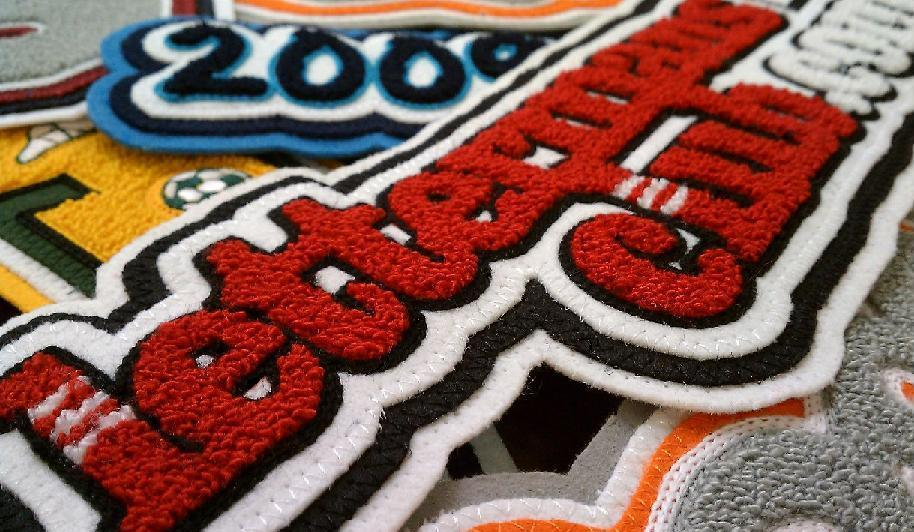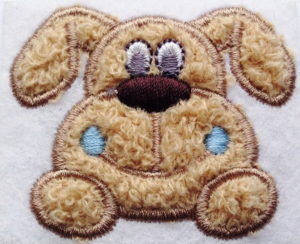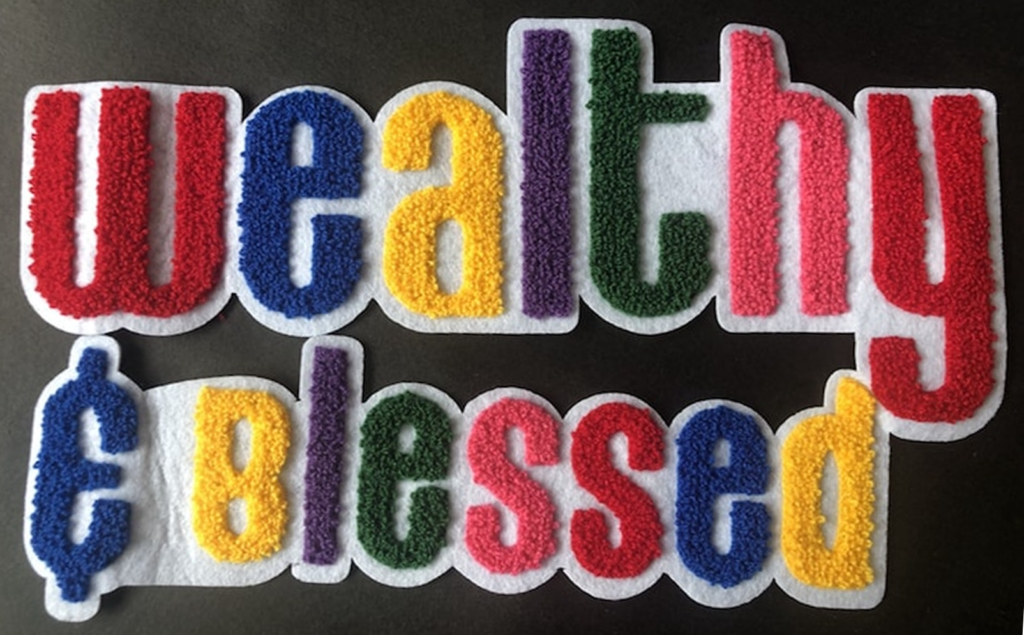How to Create Chenille Embroidery for Sports and Teams

Welcome to the World of Chenille
From the pros to college to high school, sports is big business in America. And all of this frenzy paves the way for lots of promotion and recognition on a large scale.
In fact, it really all begins at the high school level with the letterman jacket. It’s an instant symbol of achievement in sports and a very coveted item for any teenage athlete. But it’s not so much the jacket as it is the large fuzzy letter sewn on the left chest. Amazingly this bundle of yarns with the consistency of a shag carpet is a status symbol of epic proportions.
Chenille embroidery is often used for sportswear, as it can be applied to jackets, sweatshirts, and hats. The process begins with a design that is first digitized, or translated into a stitch file. This file is then loaded onto a chenille embroidery machine, which stitches the design onto the garment using thread and needles. The resulting design is both durable and eye-catching, making it ideal for activewear. And while chenille embroidery may seem like a relatively new phenomenon, the technique actually dates back to the 19th century.
 Chenille is quite different from traditional embroidery, though it is very complementary, as many designs actually combine both applications. Chenille is sewn using a special machine that feeds yarns up through the bottom in such a way as to create a raised textured surface that resembles carpet. Though it’s called chenille embroidery, the sewing process has very little resemblance to the embroidery sewing process. (And there is no bobbin to run out when you aren’t looking!!!!)
Chenille is quite different from traditional embroidery, though it is very complementary, as many designs actually combine both applications. Chenille is sewn using a special machine that feeds yarns up through the bottom in such a way as to create a raised textured surface that resembles carpet. Though it’s called chenille embroidery, the sewing process has very little resemblance to the embroidery sewing process. (And there is no bobbin to run out when you aren’t looking!!!!)
Chenille Started at Yale University
Today, the letterman jacket is more popular than ever, with companies like Varsity manufacturing hundreds of thousands of them each year. But the origins of the letterman jacket date back to 1865, when Yale University first introduced them as a way to reward athletes for their accomplishments.
The jackets were originally made from wool, but today they are usually made from synthetic materials like polyester. Despite this change in material, the jackets still feature the same distinctive chenille patches that have come to symbolize achievement in sports. In fact, the process of making these patches has changed very little over the years. First, the design is embroidered onto a piece of twill fabric using a special machine. Next, individual yarns are hand-tied to the fabric to create the raised “chenille” effect. Finally, the patch is sewn onto the jacket. The entire process is time-consuming and labor-intensive, but it’s this attention to detail that makes the letterman jacket such a coveted item.
What are the Characteristics of Chenille Embroidery?
Chenille embroidery is a unique form of needlework that combines the beauty of traditional embroidery with the durability of patchwork. Unlike traditional embroidery, most of the work in chenille is done on a fabric background called scrim felt. This felt is then manually cut out and sewn to the garment like a patch.
Chenille embroidery is characterized by its raised, padded appearance. The design is created by stitching rows of French knots onto a fabric base, using a heavy thread such as chenille or yarn. The knots are then cut open to create a fluffy, textured effect.
It is often used to add a touch of luxury to clothing and home décor items. It can be used to create intricate patterns and border designs, or simply to add a bit of texture and interest to a plain fabric. Because of its raised nature, chenille embroidery can also be used to create 3D effects. When creating a design with chenille embroidery, it is important to use a stabilizer to support the fabric and prevent the stitches from sinking in.
Using a Chenille Embroidery Machine Saves Tons of Time
Typically, the scrim felt is mounted in a large frame so that multiple designs can be sewn in one hooping. This method makes chenille embroidery much more durable than traditional needlework, and it also allows for more complex designs. As a result, chenille has become a popular choice for both casual and formal garments.
 The trimming process begins with the operator using special scissors to remove excess fabric from around each design in parallel with the outer edges. A small amount of it is left so that when it’s sewn onto a garment, there will be enough room for stitching on both sides without cutting through any part itself!
The trimming process begins with the operator using special scissors to remove excess fabric from around each design in parallel with the outer edges. A small amount of it is left so that when it’s sewn onto a garment, there will be enough room for stitching on both sides without cutting through any part itself!
The design of the patch is really what sets this shirt apart. Chenille, often done on its own without being attached directly to clothing or fabrics for a more natural look and feel- has been used as an accent in order to create something unique here!
And since you can’t always put chenilles right onto clothes themselves (especially if they’re made from sheer material), we get our final step: applying those beautiful little strands by hand sewing them onto garments with either regular machine stitching too
Chenille embroidery may seem like a more difficult craft because there are no stock designs and keyboard lettering. However, it’s actually easier than traditional stitching due to the fact that you can digitize for chenille with ease instead of having hand-stitches or thread knots show up on your piece as well!
What Else Can you Create with Chenille?
Today’s market is not limited to just Letterman/Varsity Jackets; like custom t-shirt transfers, you can find chenille on just about everything! Some ideas include cheerleading uniforms, band uniforms, club jackets, skirts, blouses, pajamas, robes, pillow shams, quilts, children’s clothing, throw pillows, and patches. With the rising popularity of this unique fabric, there is no better time to cash in on this trend.
Embroidery machines are capable of so much more than just embroidering! With a few simple supplies, you can use your embroidery machine to create chenille patches that are perfect for embellishing garments, bags, and more.
Chenille is a type of fabric that is created by stitching piles of yarn or thread onto a backing fabric. The resulting fabric is soft and fuzzy and has a distinct textured look. Because chenille is often used for applique patches and other decorative elements, it can be quite profitable to produce. In addition, the chenille is relatively easy to create with an embroidery machine. With a little practice, you can churn out high-quality chenille patches in no time at all!
Whether you are looking to start your own business or simply want to add a unique touch to your existing line of products, chenille embroidery is a great way to do it. With a little creativity and some elbow grease, you can tap into this growing market and start making money today!
